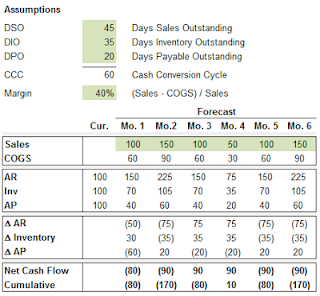
But the mid-sized firms face hurdles with historical data, so they need to select the most appropriate tools that align with their businesses to improve forecasts. Larger companies have huge chunks of data and automated models/ tools in place to fuel their forecasts. Big businesses have more array of inputs but mid-sized businesses have fewer data, so they rely more on guesswork, which causes anomalies in forecasting. Thus, while carrying out a forecast from a predictive model, a lower amount of data reduces the accuracy of the output. Moreover, cash flow prediction needs a large quantity of data to predict behavior and outcomes with utmost accuracy.


#TREASURY CASHFLOW FORECASTING MANUAL#
The manual tasks increase errors and complexity. Highly skilled finance professionals still spend half of their time processing transactions rather than focusing on forward-thinking. On average, treasury staffs devote 84% of their time to low-value activities. To overcome this, it is imperative to encourage communication in and across departments. The downside to the huge structure of the finance team is that they work in silos, which makes decision-making complex. However, this team structure may differ from one company to another, and the roles may also intersect. Their team includes the CFO, VP of Finance/ Treasury, Controller, Treasurer, Analysts, Managers, and Accountants for Tax and Finance Management, as well as functional leads for procurement, accounts receivable, and FP&A. Large enterprises often have a bigger finance team.

#TREASURY CASHFLOW FORECASTING PROFESSIONAL#
A mid-sized business usually lacks a specific department for treasury or has departments for AR, AP, and Payroll, with a professional finance team including an Accounting Manager and a full-time CFO.Mid-sizved firms have a headcount of 50-250 employees and deal with cash flow tracking and bank financing for minimizing risks while a bigger firm that has around 250 or more employees focuses on M&A, business acquisition and growth, and FP&A planning, with a wider variety of financing options. Mid-sized firms have revenue of between $50 million to $1 billion, whereas large enterprises have a revenue worth $1 billion or greater. Depending on the size, revenue, and headcount of the business, the cash flow forecast differs between a mid-sized business and large enterprises.


 0 kommentar(er)
0 kommentar(er)
